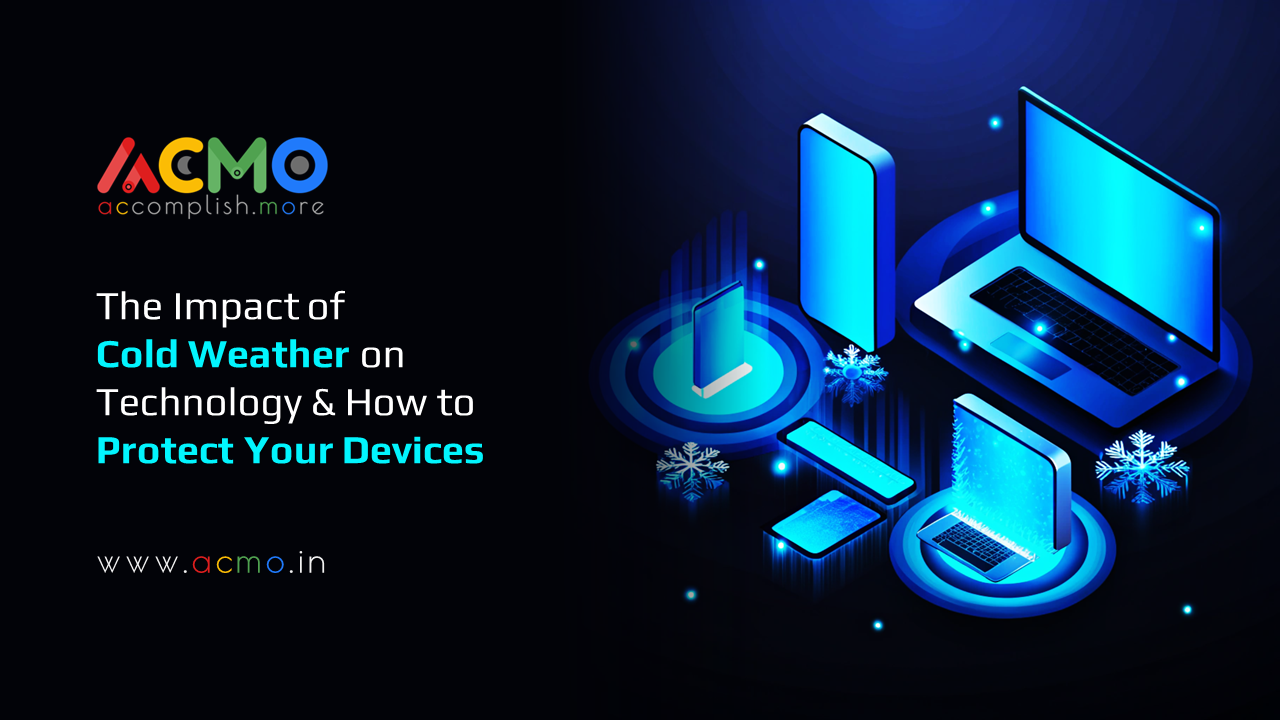The Impact of Cold Weather on Technology and How to Protect Your Devices
As temperatures drop and winter sets in, it’s not just humans who need protection from the cold—our devices do, too! Extreme temperatures can affect how well our technology functions, potentially reducing performance or causing long-term damage. In this post, we’ll explore how cold weather impacts various devices and what steps you can take to keep your gadgets safe and functional all winter.
How Cold Weather Affects Your Devices?
This is a common and visible fact that almost all devices have optimal temperature ranges for operation, and extreme cold can lead to several issues. Some of the most visible problems are:
Battery Life Reduction: You must have noticed a drastic change in the battery life of mobile phones or laptops as soon as cold weather starts approaching. Most of these gadgets have Lithium-ion batteries that are sensitive to cold. When exposed to low temperatures, the chemical reactions within the battery slow down, reducing efficiency and causing the device to lose charge more quickly. This can either shorten the battery’s life span or damage it completely.
Screen Malfunctions: Screens of these gadgets become unresponsive in very low temperatures, or in other words, the screen gets hanged and does not work well.
Internal issues: The changing of the position of the devices from cold to warm environments and vice versa can potentially cause damage to internal components. For example, bringing a cold device into a warm room can lead to moisture build-up inside, risking short circuits.
Which Devices Are Most Affected?
While all devices can suffer from cold temperatures, some are more vulnerable:
Smartphones: Due to their reliance on lithium-ion batteries and LCD screens, smartphones are particularly affected. Cold weather leads to severe battery damage, and exposure to extreme temperatures may result in cracked screens.
Laptops and Tablets: Laptops and tablets also experience reduced battery life and potential screen issues in cold weather. In particular, laptops that rely on hard disk drives (HDDs) instead of solid-state drives (SSDs) have more problems in cold temperatures.
Cameras: DSLRs and other digital cameras rely heavily on batteries, so their performance can decrease in colder temperatures. Additionally, fog on the lens can reduce picture quality.
How to Protect Your Devices in Cold Weather
Here are some tips that will help you protect your gadgets to a far better extent:
a) Keep Devices Warm
Make sure that you keep your devices in warm areas or pockets to avoid sudden battery drainage. Or you can keep some warm clothes or a bag for your devices that you can carry to avoid any difficulties with the battery.
b) Use Insulating Cases and Covers
Nowadays, companies also provide protective, insulating cases designed to keep devices warm. These are designed as per the requirements and offer additional protection against cold temperatures, helping maintain device temperature.
c) Allow Devices to Gradually Adjust to the new environment
When bringing a device from a cold environment into a warm one, give it time to adjust gradually. You can do this by keeping it on an airplane or switching off mode and then switching it to the normal mode after an hour or so. This small-time gap can help its internal system adjust gradually and save you from further troubles.
d) Avoid Draining the Battery Completely
Avoid draining your battery completely as this can help you save your battery duration. Also, as a backup option, you can always keep a power bank with you that can aid you immediately whenever you have the need.
e) Don’t Overuse Devices in the Cold
Avoid using your devices in extremely low temperatures for prolonged periods. If you’re outdoors for a while, consider turning off your phone or putting it in low-power mode to conserve battery.
Cold Weather Protection for Your Tech: Additional Tips
Back up Your Data: Regular backups are essential. Cold weather can be unpredictable, so ensure that you back up your data to avoid any loss.
Use Cloud Storage: For photos, videos, and files, consider cloud storage options so you can access them even if your device temporarily fails.
Turn Off Non-Essential Features: Disable unnecessary features and background apps to conserve battery life, as your device will naturally lose charge faster in cold conditions.
Conclusion
Winter brings unique challenges, especially for electronic devices. Cold temperatures can lead to battery drain, potential damage, unresponsiveness, and other issues. Recognizing these seasonal impacts is essential, as they’re natural occurrences during winter. Taking preventive measures can help protect your devices and minimize risks, ensuring they stay functional and safe through the colder months.
Keywords



